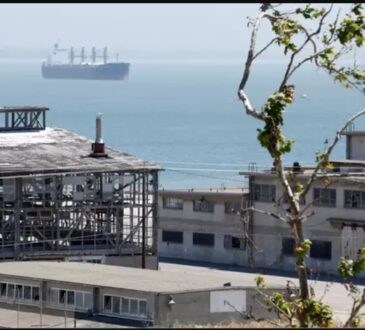Why California Gov. Newsom announces new vision for San Quentin State Prison: Saying ‘We have failed for too long’

California’s oldest state prison will get overhauled into a “one-of-a-kind” correctional institution that borrows rehabilitation practices from places such as Norway, Gov. Gavin Newsom’s office said.
Under the proposed $20 million plan, San Quentin State Prison will be transformed from a maximum-security prison into one focused on rehabilitation and education to improve public safety and reduce recidivism rates in the state, Newsom said. More immediately, it would also be renamed San Quentin Rehabilitation Center.
Newsom visited the prison, located in Marin County on a peninsula north of the Golden Gate Bridge, Friday afternoon to announce the plan, which he said he hopes becomes a model for the nation and world.
“We want to be the preeminent restorative justice facility in the world,” Newsom told reporters
Officials highlighted high rates of recidivism in California — two-thirds of people incarcerated in the state will return to prison within three years of their release, according to state Department of Corrections figures.
An advisory group made up of criminal justice, rehabilitation and public safety experts will advise the state on the transformation. Formerly incarcerated individuals, representatives of crime victims and survivors — a “critical” part of this process, Newsom said — will also be among the members. The group will be co-chaired by former San Quentin Warden Ron Broomfield and Brie Williams, a professor of medicine at the UCSF Center for Vulnerable Populations.
Newsom is allocating $20 million in his 2023-24 budget proposal, which will be voted on by the state legislature, to begin the “reimagining and repurposing of the facility,” his office said in a statement. Newsom said the goal is to have the plan in place by 2025.
“I’m not naive about how difficult this is going to be,” the Democratic governor said. “But we are here with a sense of urgency and a sense of intentionality.”
The San Quentin plan is the latest in the Democratic governor’s efforts to reform the state’s prison system, which have included ending the state’s use of private for-profit prisons and placing a moratorium on executions in the state.
San Quentin’s death row unit, the nation’s largest, is being shut down and all condemned inmates moved to other prisons. Both the existing condemned row housing unit and a Prison Industry Authority warehouse “will be transformed into a center for innovation focused on education, rehabilitation and breaking cycles of crime,” Newsom’s office said.
The model in Norway — known for its low recidivism rates and emphasis on humanity in the prison system — has inspired practices in other facilities in California’s state prison system, as well as in North Dakota, Oregon and Pennsylvania.
The Anti-Recidivism Coalition, an advocacy group that works to end mass incarceration, called California’s plan a “massive move towards rehabilitation.”
The governor’s plan has faced some pushback from state lawmakers over what the changes mean for victims and how it would work.
Republican state Assemblymember Tom Lackey said the proposal has “zero consideration for the victims of crimes.” Republican state Assemblymember Joe Patterson said he was “skeptical” of the program “given the secret prison releases by this administration.”
When asked what the greatest challenge will be in getting the plan done, Newsom said, “Fires, droughts, social unrest, pandemics,” before pointing to the team of state leaders who joined him at Friday’s press briefing and saying, “Committed people find ways of getting things done.”
Newsom said the new plan is “building off the success” of other rehabilitation programs in San Quentin, which is known for its own accredited liberal arts degree program, a popular podcast “Ear Hustle” and the inmate-produced newspaper the San Quentin News.
Broomfield, who until co-chairing the advisory group was the prison’s warden, said the plan will “enhance and scale the efforts we have taken here for many years, and it will give San Quentin more resources, more programming space and more support needed to bring true innovation and culture change to our department.”




